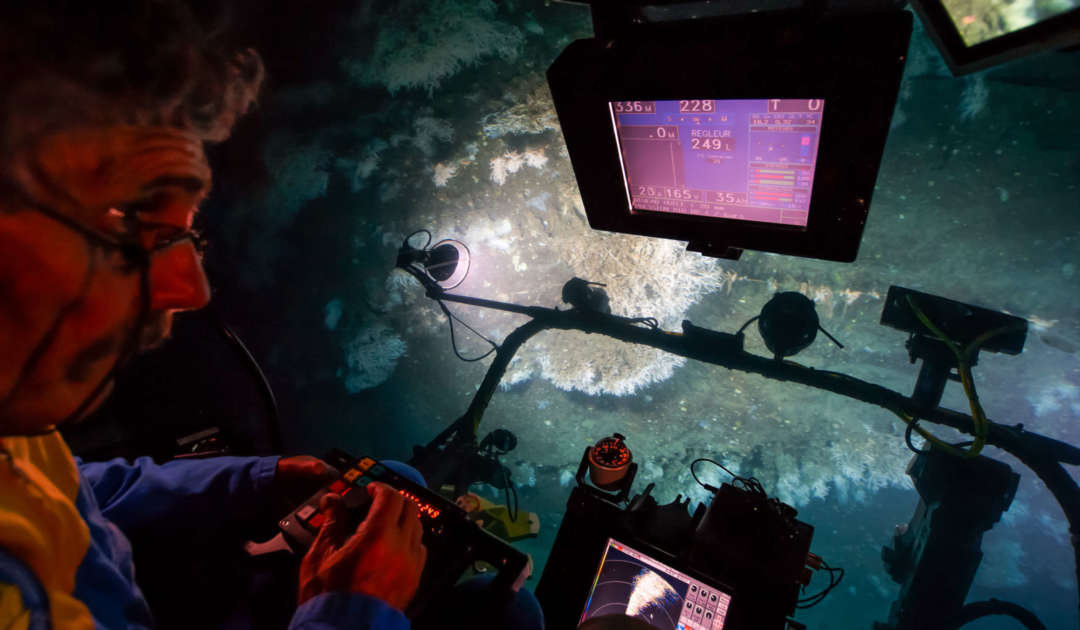Research
The research focus of the Marine Geology Division is centered on ecosystems and their initiation, development, and eventually also their decline across the last 20,000 years. This timeframe spans the essential climate regimes, from the full glacial conditions during the last ice age to the warm interglacial conditions of the present. This is a timespan which was characterized by a massive sea-level rise, by strong temperature changes, and furthermore by the increase of the global human population, which alongside with increasing resource shortenings accounts for ongoing global change.
For the marine environment these changes do not only signify a flooding of former terrestrial areas on the continent, but also result in a poleward advance of warm subtropical watermasses in high latitudes. These lead to drastic migrations of benthic ecosystems from low to higher latitudes. In particular, ecosystems which conquered areas in proximity to the poles had to face a pronounced seasonality (resulting from the earth’s inclined axes) and particular physical settings.
The pronounced seasonality in high latitudes invokes enormous shifts in insolation, which comprise a direct influence on water temperatures and nutrient cycling, and thereby do pose a strong selection pressure on the physiological adaptation of the affected organisms. The latter is a particular trait of the northern hemisphere, where, due to the land-sea distribution and due to oceanic circulation patterns, the benthic ecosystem re-establishment after each glacial period literally had to start from scratch. This contrasts with the marine ecosystems in polar latitudes of the southern hemisphere, which thrived in relatively constant cool to cold conditions across glacial to interglacial cycles, since the establishment of the Circum-Antarctic current some thirty-five million years ago.
In front of this backdrop with rapidly changing environmental conditions, we aim to unveil the complex interactions between climatic and oceanographic changes with fossils (>10.000 yrs) and recent biosedimentary systems. These ecosystems have a strong preservation potential and open a wide field for biological, ecological, and sedimentological research approaches which are fully rooted within the longstanding tradition of our institute.
We focus herein on ecosystems, which comprise a predominance of carbonate-shell bearing organisms and have thus a good preservation potential – for instance cold-water coral mounds, coralline algal banks and deep-sea oyster sites. Environments with a lesser fossilization potential, like kelp-forests, are included for their outstanding importance in nutrient cycling. Beyond the ecosystem-level-based research approaches, we further aim to extract environmental records at high resolution from long-lived organisms with incremental banding. Annual bands continuously precipitated across the life-span of a bivalve or in red-algae, for example, bear excellent records of temperatures and other environmental parameters, which are being extracted with refined geochemical methods.
A further expertise of our institute is the investigation of biodegradational processes in carbonates, better known as bioerosion. This destructive process follows either chemical pathways (biological corrosion) or mechanical pathways (biological abrasion), during which the involved bioeroding organisms leave characteristic traces. Over the years we have compiled an extensive experience in this field, including the taxonomic classification of the trace-makers (bacteria, algae, fungi, sponges, molluscs, polychaetes, crustaceans, bryozoans, etc.), and conduct experimental work with experimental panels along bathymetric gradients. These experiments have for example been carried out in Svalbard, in Swedish Kosterfjord, in the Azores and in the Eastern Mediterranean.
Our research projects are contributing to the research SENCKENBERG:
Biodiversity and Ecosystems
Biodiversity and Earth System History
